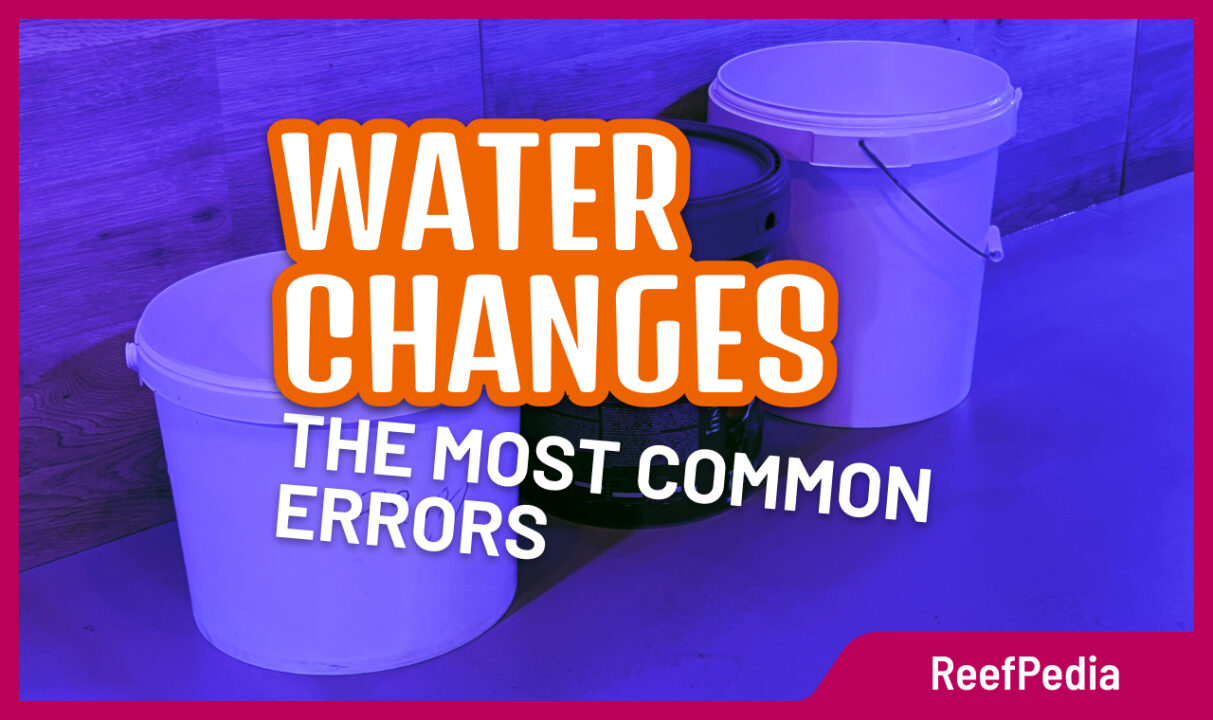Table of Contents
A water change is one of the easiest things we can do in a marine aquarium, yet there are a few mistakes that commonly happen. Read this article to get properly prepared before starting to run water changes.
Water changes on a young tank?
The first thing that can be confusing for beginner aquarists is whether I can run a tank without water changes. This method is rather aimed at people with experience who already have mature tanks. Biology should be stable and we should have an in-depth understanding of the topic of salinity and marine aquarium chemistry.
So let’s not make the mistake of running our tank with a method based on water changes from the very beginning. Doing water changes on an aquarium that is still maturing can lengthen this process.
Why do water changes at all?
We perform water changes in a saltwater aquarium in order to supply minerals that have been consumed, and to remove excess water.
Performing water changes larger than 10% of the water
Too many water changes can destabilize the biology in the aquarium. Disregulated biology parameters can contribute to poor health in the animals. Though in some cases, it’s advisable to perform up to 20% water changes. This happens when water problems occur, for example rust has been detected.
I’ve performed a 10% water change, have I removed the contamination from the water?
We’re assuming that you have a problem in the water. For example, you have a severe overdose of zinc. If you’ve only done a 10% water change, your problem is still in 90% of the water. You need to do enough changes to remove the problem from the water. If, for example, you have an overdose of zinc and it’s level is double the desired amount, you will have to do around 5 water changes of 10% each to get rid of it (an example assumption, as the zinc will be partially consumed).
Should you flush the filter media with RO?
When performing water changes, we usually also clean the sump. We often have various types of filter media in the sump. Let’s rinse them with the water that remains from the water change. This will preserve the bacteria that are on the filter media. If we rinse the media with RO water we will kill the bacteria living on them.
Mixing the brine too briefly
Although many salts manufacturers recommend stirring the salt for 20 minutes, while we should do this for a minimum of 24 hours. This will allow the substances in the salt to combine well. This will also oxidize any unwanted compounds that may be present in the salt. Your animals will appreciate the quality of a better mixed brine.
Not checking salinity at the end of saltwater mixing
At each saltwater mixing process, the salinity in the water must be checked. Before the final measurement, it is required to calibrate the refractometer. The final test of salinity is very important. We don’t want to change the salinity with water changes (of course this rule does not apply when we do the water change specifically to change the salinity).
Not mixing the salt before use
It is a good idea not to mix the salt well before use? The point is that some salts can disbond. If you don’t mix them, the parameters may not distribute evenly.
Using untested, cheapest salts
I don’t advise buying the cheapest salts. It’s important to pay attention to the quality of the salt. If you accidentally use salt of which quality you’re not sure, you may supply the aquarium with pollutants. Untested salt can have a bad composition and provide us with heavy metals (or unwanted PO4 for example).
Cleaning the sump and the aquarium after a water change
It’s a good practice to first clean the sump and the aquarium and only then do a water change. Otherwise we will create a pointless mess.
About the author

Marek Protasewicz
Reefkeeping has been my passion for over 10 years now. I love learning. The hobby has taught me many valuable lessons, patience being the best example. Combining work and passion is my path. I run Crazy Coral, a marine aquarium shop, for a number of years. Building this business from the scratch I learnt from my own mistakes at a heavy cost.
Later I managed a project aimed at development of methods for quick growth of Corals in non-natural conditions. The project was carried out by Get Sales, Poland. Presently, I am responsible for distribution strategy at Reef Factory, of which I am a co-founder. The company produces smart devices for marine aquaristics. The last projects I have been involved in are Social Reef and ReefPedia.



